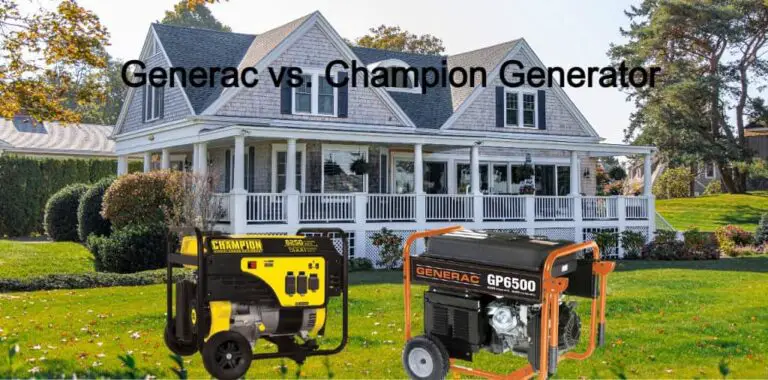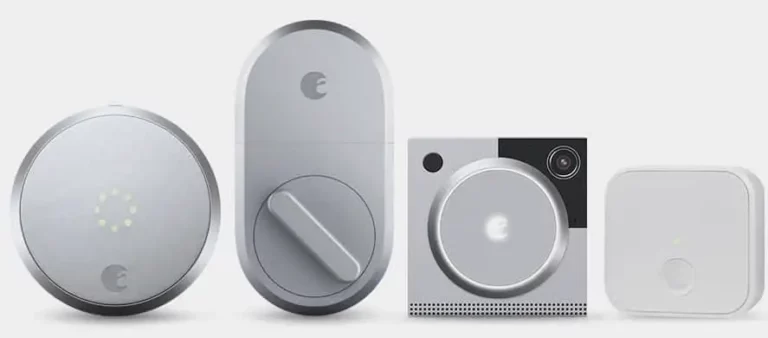Do Portable Generators Damage Electronics & Appliances?
Generators are incredibly useful devices that can keep your necessary equipment powered, like phones, appliances, and computers. It’s worth asking before any significant purchase whether a portable generator can damage electronic devices or appliances in any way – can they?
Portable generators won’t damage electronics and appliances if it’s an inverter generator. A non-inverted generator, however, provides an uneven stream of energy that may spike, and for sensitive electronics and appliances, these irregular spikes can damage delicate circuits and motherboards.
In this article, I’ll be discussing how portable generators can damage your devices, the difference between clean and dirty power, and other relevant information about generators that may be helpful.
How Can Portable Generators Damage Electronics and Appliances?
Generators without inverter technology run the risk of damaging electronics due to the uneven streams of power that can ‘surge.’ Microchips in most household electronics are very fragile, and such spikes in power can easily cause permanent damage to them because they can’t handle that much power.
Unstable Power Loads
The main culprits when a generator damages items plugged into it are improper power load or lack of fuel. If a conventional generator runs low or entirely out of fuel, it can’t keep running at the same level, and the power will drop or even fail.
For sensitive equipment like smartphones or computers, this can be disastrous as uneven current cooks or shorts out their delicate internal components.
Trying to plug too much into a generator is what I mean by ‘improper power load.’ It’s crucial when using a generator that you know how much power it produces and how much power your appliances and electronics need.
Power specifications can be found on appliances, and for electronics, this is usually printed on an operator’s manual. Ensuring that the total power load you put on the generator doesn’t exceed the power it produces is key.
For conventional generators without inversion technology, you may benefit a lot from a simple surge protector or ‘power strip.’
This can provide a layer of protection between the surging effects of your generator and your valuable devices.
Can a Generator Damage a Refrigerator?
A generator can damage a refrigerator if it can’t provide enough wattage to start the appliance. A standard refrigerator needs up to 2000w just to start, then less repeatedly after that. If the generator can provide 2000w, then you should be able to run your refrigerator.
Can a Generator Damage A Freezer?
Generators can damage freezers in the same way that they can damage refrigerators – by not providing a sufficient amount of electricity to start and maintain the power flow of the appliance. Freezers need up to 2500w to start, and less to run after that. Generators with 2500w output would work fine.
What Does Clean and Dirty Power Mean for You?
Clean and dirty power are terms that define whether electricity has been processed after its generation. Clean power doesn’t produce spikes of energy because of this refinement, whereas some older and other types of generators don’t process power and can produce unstable spikes in power output.
Clean power is electrical energy that has been processed after generation. This means that it doesn’t produce spikes of current that can ‘surge’ and harm things plugged into the generator. Inverted generators produce clean energy, and you don’t have to worry about your devices being damaged by them.
Dirty power is produced by some older and industrial generators, which essentially just means it is raw electrical energy that hasn’t been refined with inversion technology. Dirty power can power devices fine, but in cases of fuel running out, it can produce blackouts and power surges that have the potential for harming your devices’ delicate circuit boards.
Conventional vs. Inverted Generators
The main difference between a conventional/standard generator and an inverted generator is what kind of electricity is produced by it. A regular generator is just an alternator attached to an engine, which produces electric current as long as the engine is supplied with enough fuel to run continuously.
Let’s say a conventional generator ideally runs at 3600 revolutions per minute or rpm, which is supposed to produce 120v of power at a frequency of 60hz. Because the generator isn’t a perfectly efficient machine, it stutters sometimes and doesn’t run at 3600rpm at all times.
Assuming that you’ve worked out your energy needs to 120v or under, this can be problematic. When the generator goes under 3600rpm, the power it makes drops, and that can mean your devices don’t have enough energy to run. The engine being inefficient also makes generators loud. Get it so far?
Inverted generators are rather clever because they utilize higher frequencies to produce higher quality power and convert direct current (DC) to more efficient alternating current (AC). The initial current in the generator is of higher frequency before it’s ever converted, and the conversion from DC to AC only further refines the quality of power.
Essentially, the benefit of power inversion is that the generator’s inversion system has greater control over the stability of the power it generates. Rather than providing unstable power that may spike, an inverted generator produces more stable electricity that’s safe for your electronics and appliances.
A lesser but still handy feature of inverted generators is that they are much quieter than conventional generators, operating at a loud hum instead of a noisy engine.
What To Look For When Choosing a Generator
We’ve already established that buying an inverted portable generator should help to protect your electronics and appliances from sudden power surges.
However, there are some other key things to consider to help protect your home.
Portable vs. Installed
Typically, generators are either portable for convenience or installed at a preset location, typically a ventilated garage or shed.
Installed generators are usually already wired up to a house’s electrical grid so that it can seamlessly turn on and power a home and its essential systems in case of a power outage caused by storms or other hazards.
However, being part of the grid does mean it’s susceptible to shortages or power spikes, which can be damaging to your electronics.
Except when specially installed to be in a fixed location, most generators are sold with handles and wheels for relocation and mobility.
Wattage
As we talked about above, it’s essential to know how much power you need from a generator. A generator capable of running multiple large appliances and devices like phones or computers would be reasonably high wattage.
If a generator doesn’t have enough wattage, it can’t start and maintain the operation of large appliances like freezers and refrigerators.
Also, if you have a generator that doesn’t have enough wattage to handle everything you need to power, you may find that it quickly overheats. This can lead to it shutting down the circuit board, or even a fire in some extreme cases.
On the other hand, if you just need a generator to keep refrigerators cold and phones charged, you may not need as much power.
Adding up the amount of power each device and appliance needs to run is the best method of getting a rough idea of how much wattage you need out of a generator.
Inverted vs. Conventional
As discussed above, inverted generators are safer for your devices than conventional generators. Whether you need this feature is absolutely up to you.
The extra technology packed into them makes inverted generators pricier than traditional generators, so that is worth considering as well.
Power Type
There used to be gas-powered generators, but demand for alternative energy sources has made propane, solar, and battery power generators perfectly usable options.
The cons of solar and battery generators are that they don’t produce as much current as gas and propane models, but they’re fine for low wattage needs.
As mentioned above, adding too many devices to these lower wattage generators can be dangerous. With that in mind, these are best for minimal use with smaller electronics.
Run Time and Fuel Tank Size
If you need a generator to just charge phones while camping, chances are you can get away with a small, cheap, and light generator.
On the other hand, running a home for several days in a blackout would require a much heavier generator with a much bigger fuel tank.
Weight and Storage
Some generators are light enough to be easily wheeled around by a single person, but some larger ones designed for large buildings or electric-heavy equipment may be much more difficult to move.
This is important to consider when picking out a generator because powering lots of appliances and big devices like computers will result in needing a heavier generator than if you just want to power a fridge and charge small devices like phones.
A variable that works in tandem with weight is space. You should always make sure that the physical dimensions of a generator are acceptable with regards to how much space you have to store it.
In addition, it’s vital that you protect the generator from extreme temperatures and severe wet weather conditions. Portable generators are especially dangerous to have in cold and wet conditions as moisture can get into the outlets which can lead to power outages and electrical shortages.
Price
Price is always a factor when buying something like a generator. The cheaper the generator, the less power it can supply. This means you need to add up the power needed and compare it with generators in your price range.
Cheap generators can go for as little as $400, and go into the thousands of dollars for better ones.
Final Thoughts
While conventional generators can produce spikes of power that harm devices, inverted generators produce clean and safe energy suitable for any device or appliance.
Conventional generators are still useful for large-scale usages such as home lighting systems and less sensitive equipment like refrigerators.






